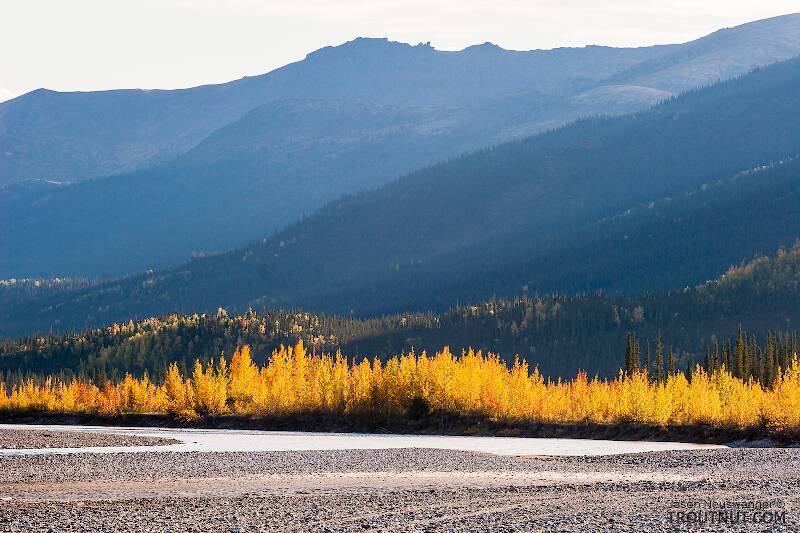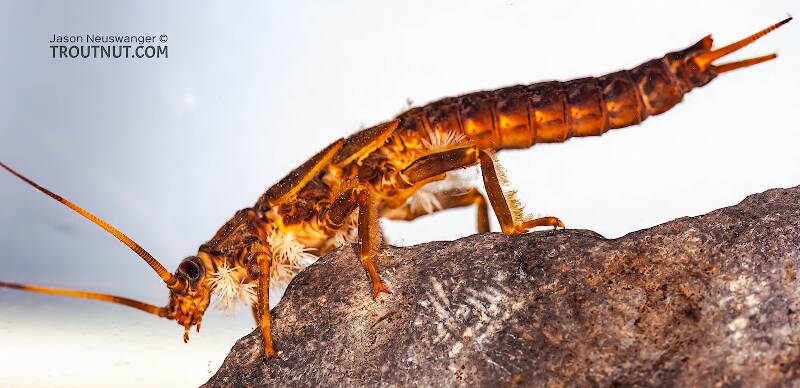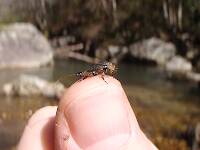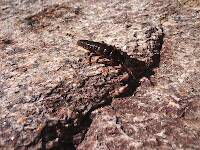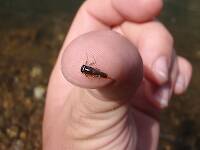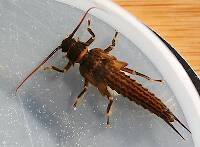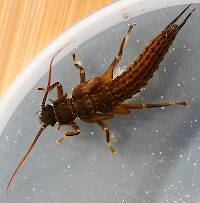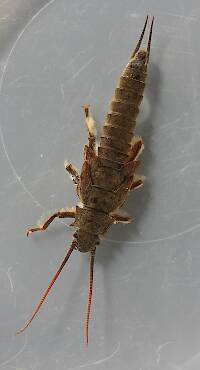
Blue-winged Olives
Baetis
Tiny Baetis mayflies are perhaps the most commonly encountered and imitated by anglers on all American trout streams due to their great abundance, widespread distribution, and trout-friendly emergence habits.
Featured on the forum

This is an interesting one. Following the keys in Merritt R.W., Cummins, K.W., and Berg, M.B. (2019) and Jacobus et al. (2014), it keys clearly to Ephemerella. Jacobus et al provide a key to species, but some of the characteristics are tricky to interpret without illustrations. If I didn't make any mistakes, this one keys to Ephemerella mucronata, which has not previously been reported any closer to here than Montana and Alberta. The main character seems to fit well: "Abdominal terga with prominent, paired, subparallel, spiculate ridges." Several illustrations or descriptions of this holarctic species from the US and Europe seem to match, including the body length, tarsal claws and denticles, labial palp, and gill shapes. These sources include including Richard Allen's original description of this species in North America under the now-defunct name E. moffatae in Allen RK (1977) and the figures in this description of the species in Italy.

Troutnut is a project started in 2003 by salmonid ecologist Jason "Troutnut" Neuswanger to help anglers and
fly tyers unabashedly embrace the entomological side of the sport. Learn more about Troutnut or
support the project for an enhanced experience here.
GONZO on Oct 4, 2006October 4th, 2006, 11:12 am EDT
Everything seems consistent with P. biloba, the "Knobbed Salmonfly." Unlike dorsata, it is usually found in small streams and headwaters where it is a real mouthful for the little trout. Typical salmonfly nymph ties tend to be likewise, so I usually choose to imitate the younger, smaller generations of nymphs.
Troutnut on Oct 4, 2006October 4th, 2006, 11:58 am EDT
Thanks. I've added a page for P. biloba with that information and changed the specimen's ID accordingly.
What's your source for the information? I still need to find a good source on stoneflies. I haven't tried hard yet since I've been focusing on mayflies, but it would be good to know where to start.
What's your source for the information? I still need to find a good source on stoneflies. I haven't tried hard yet since I've been focusing on mayflies, but it would be good to know where to start.
Jason Neuswanger, Ph.D.
Troutnut and salmonid ecologist
Troutnut and salmonid ecologist
GONZO on Oct 4, 2006October 4th, 2006, 1:02 pm EDT
Unfortunately, I'm not aware of a really good, up-to-date angler's book on stoneflies. The species I've identified today are ones I know well from personal experience.
I like Stoneflies for the Angler by Leiser and Boyle (Knopf, 1982 and Stackpole paperback reprint, 1990). It was accurate and well-researched for its day and is a good general angler's reference; but it lacks any systematic keys. There's also an Arbona stonefly book that I haven't seen or read.
And to answer your question from the other thread, I haven't come across a recent species level description of Epeorus that would be of any help.
I like Stoneflies for the Angler by Leiser and Boyle (Knopf, 1982 and Stackpole paperback reprint, 1990). It was accurate and well-researched for its day and is a good general angler's reference; but it lacks any systematic keys. There's also an Arbona stonefly book that I haven't seen or read.
And to answer your question from the other thread, I haven't come across a recent species level description of Epeorus that would be of any help.
Quick Reply
Related Discussions
Topic
Replies
Last Reply
0
May 19, 2007
by GONZO
by GONZO
1
Oct 28, 2008
by GONZO
by GONZO
3
Apr 26, 2010
by RyanBednar
by RyanBednar
4
Sep 4, 2012
by Entoman
by Entoman

